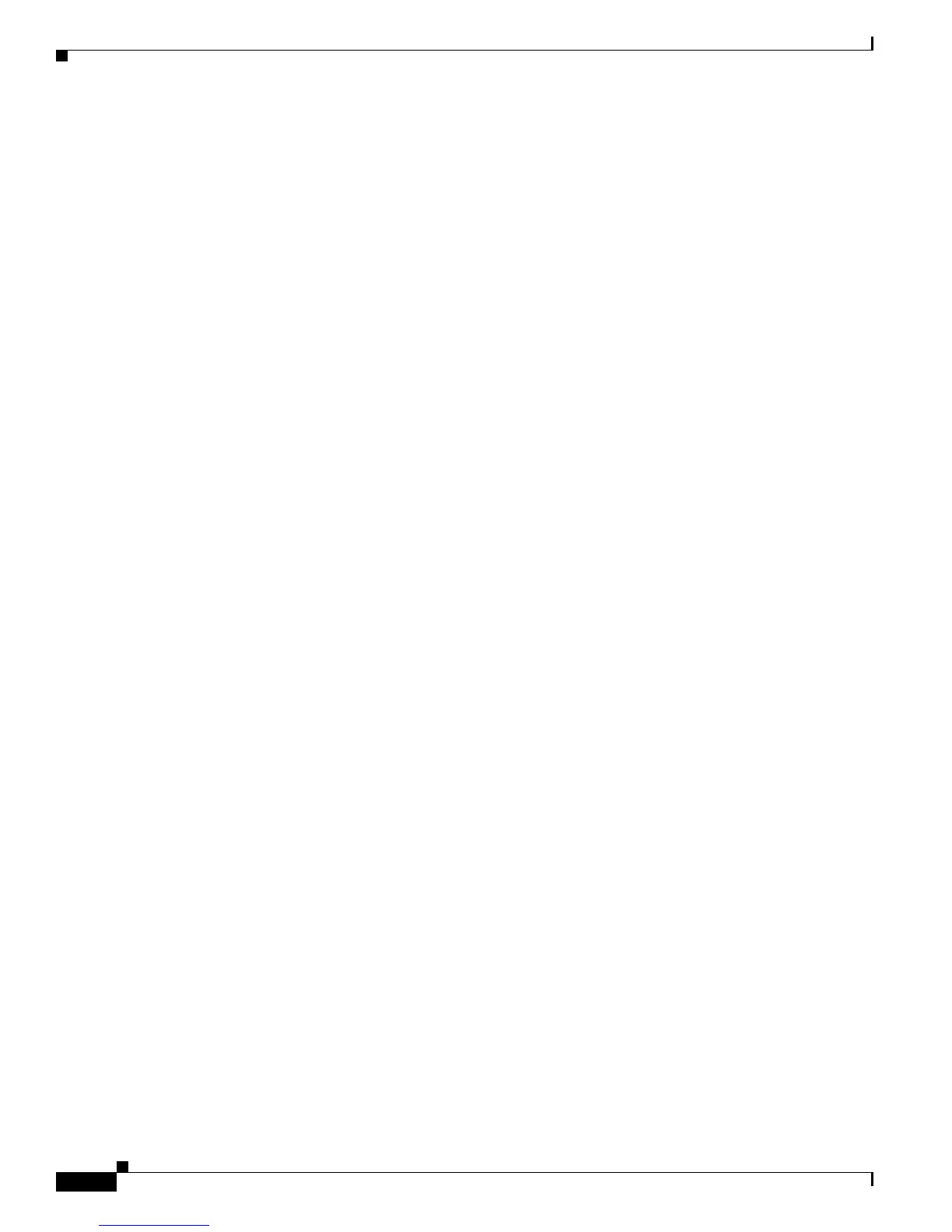11-4
Cisco 10000 Series Router Quality of Service Configuration Guide
OL-7433-09
Chapter 11 Managing Packet Queue Congestion
Queue Limit
Queue Limit Packet Buffers
The router provides a total of 4,194,304 buffers for queuing packets and calculates the default buffer size
for each class queue as described in the
“Queue Limit” section on page 11-2. Whatever the default queue
size the system calculates, if a class has a random early detection (RED) drop policy configured and one
of the maximum thresholds is configured to be larger than the default buffer size, the router
automatically increases the queue size to the nearest power of 2 of the largest maximum threshold.
You can use the show policy-map interface command to display the actual queue size. To make the
queue size larger than the default size the router calculated, do the following:
• Cisco IOS Release 12.0(25)SX and Release 12.3(7)XI, and later releases—Configure the
queue-limit command with RED.
For more information, see the “queue-limit Command” section on page 11-4, the “Random Early
Detection and Queue Limit” section on page 11-10, and the “WRED and Queue Limit” section on
page 11-20.
• Releases prior to Cisco IOS Release 12.0(25)SX and Release 12.3(7)XI—RED with queue-limit is
not supported. As a workaround, configure RED with an unused IP precedence or DSCP level and
define a maximum threshold that is larger than the default size the router calculated. By doing this,
you force the router to increase the queue size to accommodate the larger threshold.
With 131,070 queues configured, the average queue limit across all of the configured queues is less than
or equal to 32 packets per queue:
Total number of packet buffers / Total number of queues
4,194,304 / 131,070 = 32
If you change the queue size several times for 131,070 queues, the queue packet buffers can become
fragmented or might still be in use. For more information, see the
“Restrictions and Limitations for
Controlling Layer 3 Congestion” section on page 11-22.
For more information, see the “Average Queue Size and the Exponential Weight Constant” section on
page 11-21.
Default Queue Limit and Packet Buffers
When a queue is part of a high-speed interface, the default queue limit is very large. This allows the
queue to store up many packets during congestion. If too many of these type of queues are congested on
the system, it causes system packet buffer exhaustion and all queues in the system experience packet
drop.
queue-limit Command
To specify or modify the maximum number of packets that a particular class queue can hold, use the
queue-limit command in policy-map class configuration mode. To remove the queue packet limit from
a class, use the no form of this command.
queue-limit number-of-packets
no queue-limit number-of-packets

